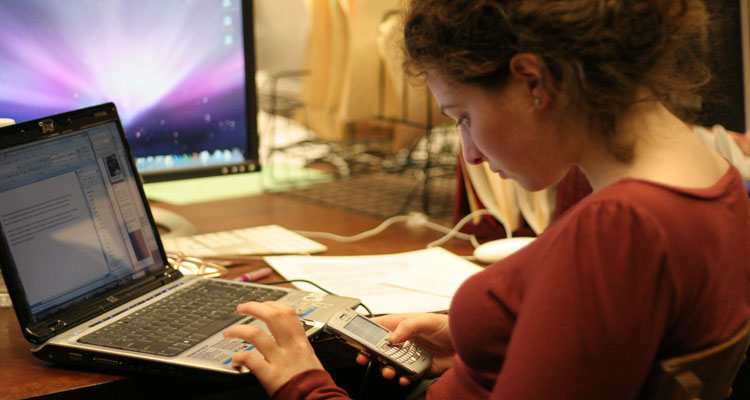Multitasking. Most of us do it at least some of the time, whether that means browsing the Internet while watching TV, texting while waiting in line at the store, switching between multiple browser tabs, or checking and replying to emails while working on other tasks.
But just because everyone does it, doesn’t mean we should. Studies overwhelmingly show we are not as good at multitasking as we think we are, performing much more poorly on cognitive tasks when we do it, and causing ourselves harm. Research shows multitasking has a negative effect on our short-term or “working memory” in adults of all ages.
Working memory is related to your executive function. It’s the active part of your memory, the part that processes information and stores it at the same time. As psychology professor Tracy Packiam Alloway, PhD, explains, “working memory is your brain’s Post-it note. It makes all the difference to successful learning.” When you follow and remember a sequence of events in a story or conversation, or memorize and then dial a phone number, that’s your working memory at, well, work.
It seems like a no-brainer: multitasking makes us less productive and makes our work suffer, so we shouldn’t do it. But it’s easier said than done. The impulse to be constantly connected, constantly distracted, can be an addiction, and very difficult to quit. And it’s not just adults in the workplace who are affected.
In one survey of kids ages 8-18, “almost a third of those surveyed said that when they were doing homework, ‘most of the time’ they were also watching TV, texting, listening to music, or using some other medium.” These statistics worry experts, since previous studies have shown that learning is spotty at best when students are distracted.
But now, a new study by a pair of teen researchers is getting attention because it seems to fly in the face of everything we know about multitasking.
A new kind of multitasking
In the past year, Sarayu Caulfield, 17, and Alexandra Ulmer, 18, have presented the findings of their two-year study at the American Academy of Pediatrics’ annual conference, the National Institute of Health in Washington, D.C., and the Intel International Science and Engineering Fair, where they placed second in the behavioral science category.
Their study, which looked at more than 400 adolescents, found that some teenagers—about 15% of study participants—actually seem to perform better when multitasking. While most other study participants did perform better when they focused on just one task, these “high media multitaskers” performed best when working with distractions like email and music.
The reasons for this aren’t clear, but Ulmer proposed one possible cause. “What our research is suggesting is that maybe our brains as adolescents and digital natives have adapted to this media influence and because we’ve grown up with it we’re able to cope with all these different stimuli,” she explained.
The average age of the students in the study was 14 1/2, placing these students squarely in the millennial generation, those born from the early 1980s to the early 2000s. If it’s true that media use and screen time are actually changing the brains of these kids, it could mean that our understanding of the most effective study habits and learning environments may have to change in the future.
While the majority of kids are still most effective as “single taskers,” it certainly seems possible that the percentage of “high media multitaskers” could increase in future generations of students if technology usage by children, even very young children, continues to grow.
What parents can do
If your kids insist that they need music or social media while they work, it is of course possible that they really are “high media multitaskers.” But it’s more likely that—like most people—they work better when focused on a single task at a time.
So until we know more about this new generation of super multitaskers, it’s best to encourage kids to focus on a single task at a time. Instead of multitasking, students and adults can try scheduling “tech breaks” throughout the workday or study time. This could mean allowing a 1 minute break to check your phone for each 10 minutes of focused work, or a longer social media or video game break for each 30 minutes of studying. While tech breaks may not be available for students in traditional school, homeschoolers and families enrolled in a home-based online school, like those offered by K12, often do have the freedom to offer such breaks for students.
And if you’re worried about the effect multitasking is having on your brain, there’s some evidence that certain brain-training apps and games can actually improve your working memory.
Just don’t play them while you’re supposed to be focusing on another task.
Image Credit – Jenn Vargas / CC by 2.0





































